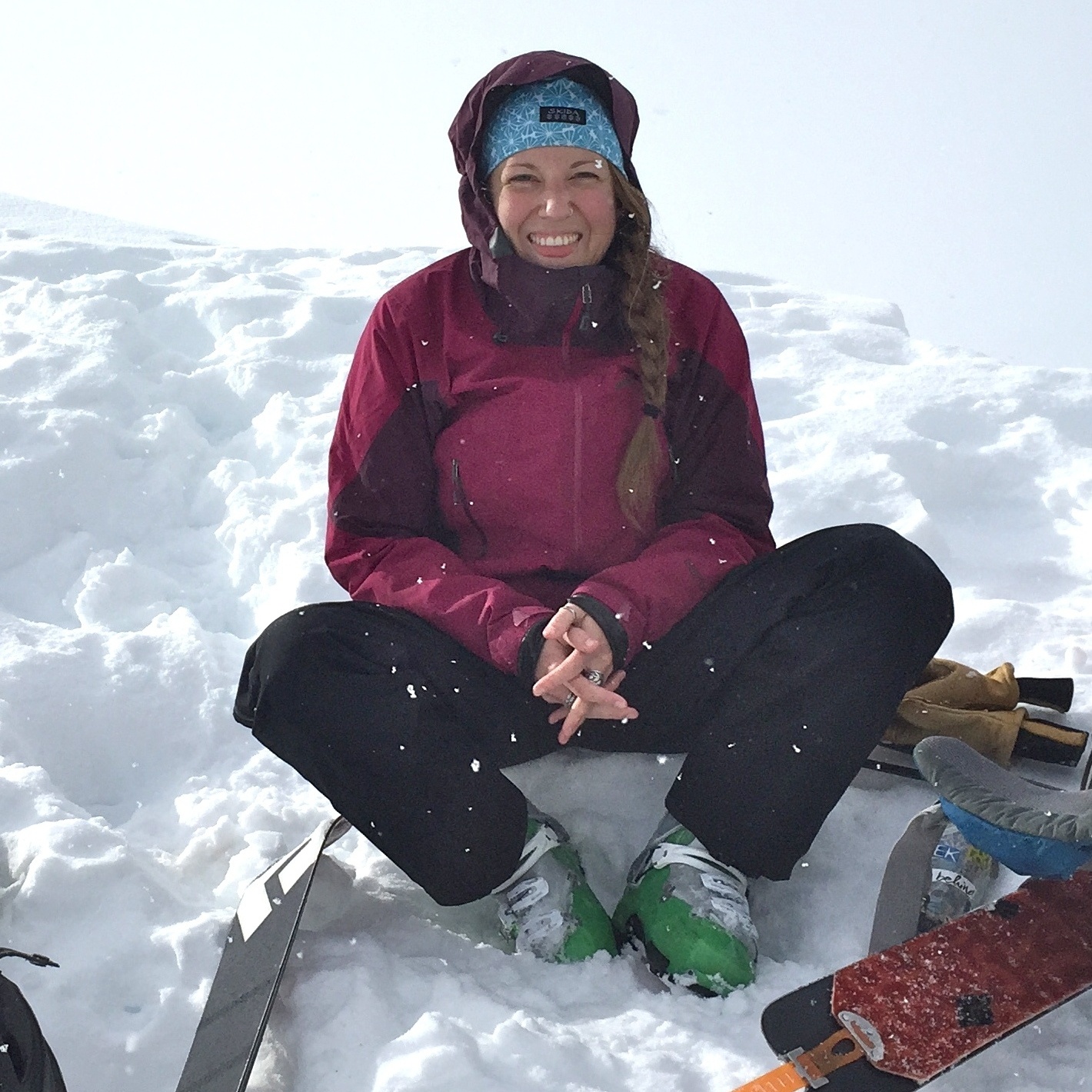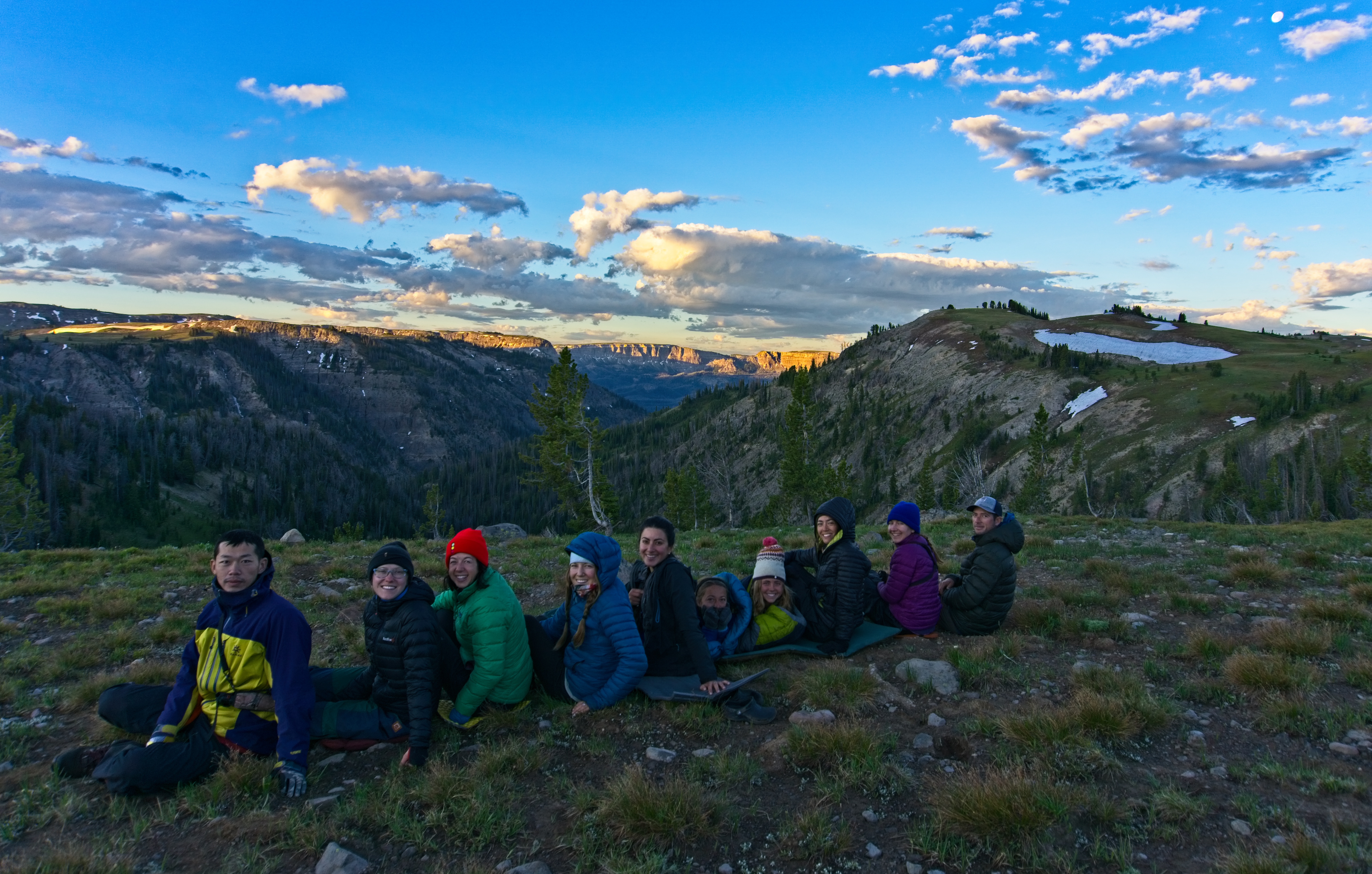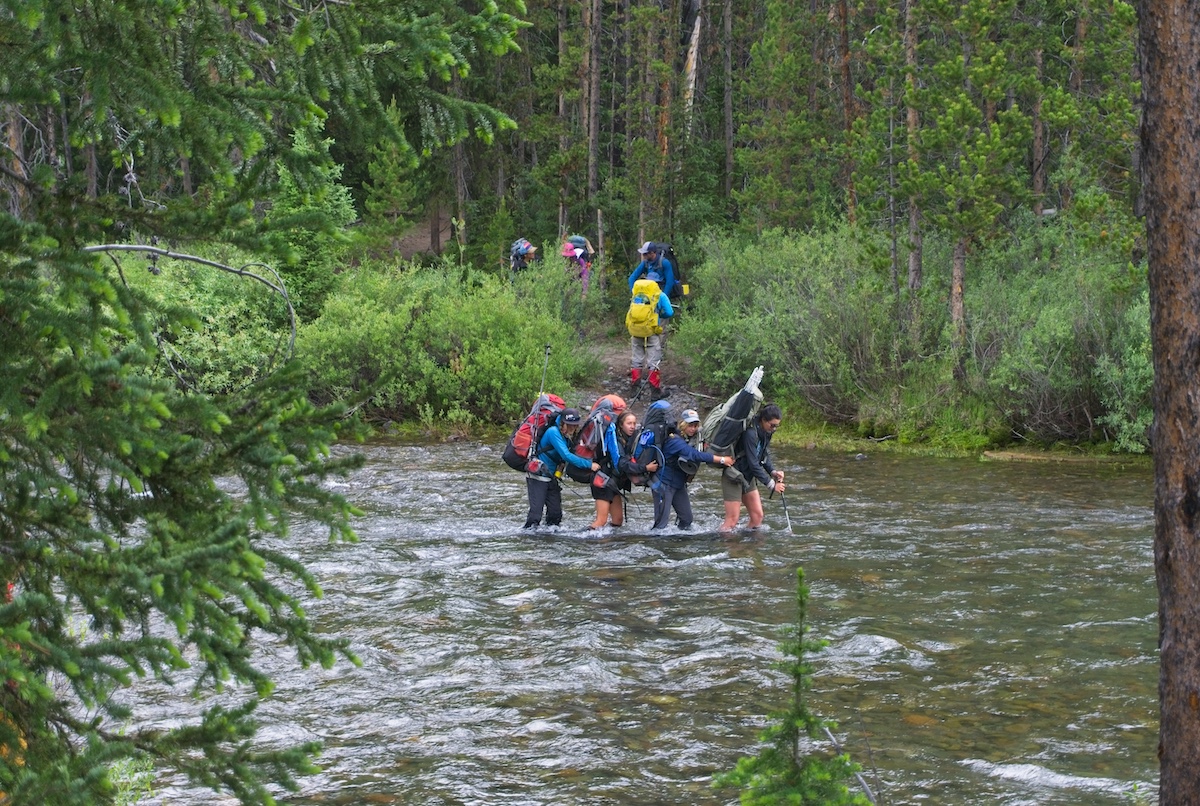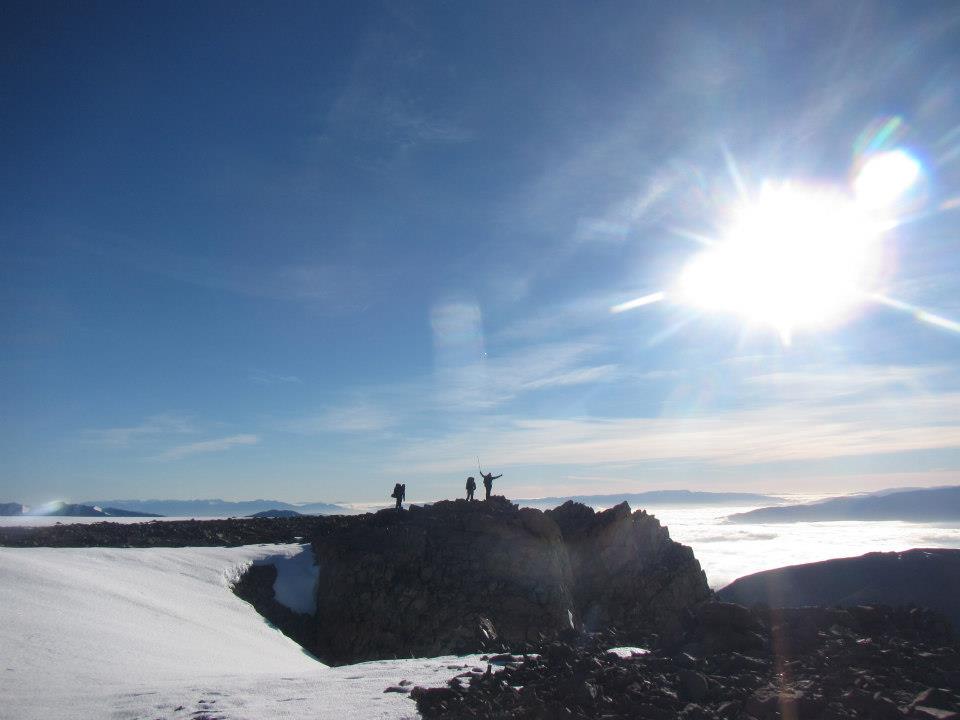
November 21, 2012 was one of my favorite days on this planet. Up until this point, the idea of identifying a favorite day had seemed impossible, like choosing your favorite drop of water in a rushing river. But this was a day that made you realize if you couldn’t identify days that made the shortlist, you hadn’t yet experienced the type of day worthy of it.
Our alarms went off at 3:30 am and the five of us rose to pack up camp and ascend the ridge above us, headlamps glowing in the darkness. Justine, Colt, Ethan, Connor and I huddled together before starting up the screefield, going over our route plan one last time.
It was our 72nd day out in the field, and we had reached our ISGE (Independent Student Group Expedition)—the much-anticipated part of our NOLS semester in New Zealand where we got to plan and execute our own 9-day backcountry trip. Our route took us up peaks and through river valleys and past lakes and into forests. The idea had been to challenge ourselves, to put into practice everything that we’d learned over the course of three months in the wilderness.
We hauled our heavy packs and watched the sunrise over the small alpine lake we’d camped next to and the massive Lake Ohau beyond that, being raucous and quiet in just the right quantities. Justine yelled out her omnipresent “I’M BEING PUNCHED IN THE FACE BY BEAUTY!” and then we sat and watched the cloud inversion fill the valley below, letting it punch us without saying anything at all.
Just beyond our sunrise perch, we approached our planned route to ascend the ridge above us, and began to question whether or not we were prepared to do so. We were suddenly looking at a narrow, icy, vertical chute surrounded by rocks and did not have ice axes or crampons. We were faced with an imminent choice—to stick to the route we’d planned, perhaps getting us in over our heads, or to backtrack in order to cross the basin and ascend the other side.
We looked around, and realized that we were it. We were the ones in charge of the day, of the decision. There was no one to ask, no one’s judgment to defer to except our own. And while that was at once intimidating, it was also powerful. We realized that all of the 71 days leading up to this one had prepared us to be exactly here—faced with a decision that would require communication, critical thinking, problem solving, confidence, and humility.
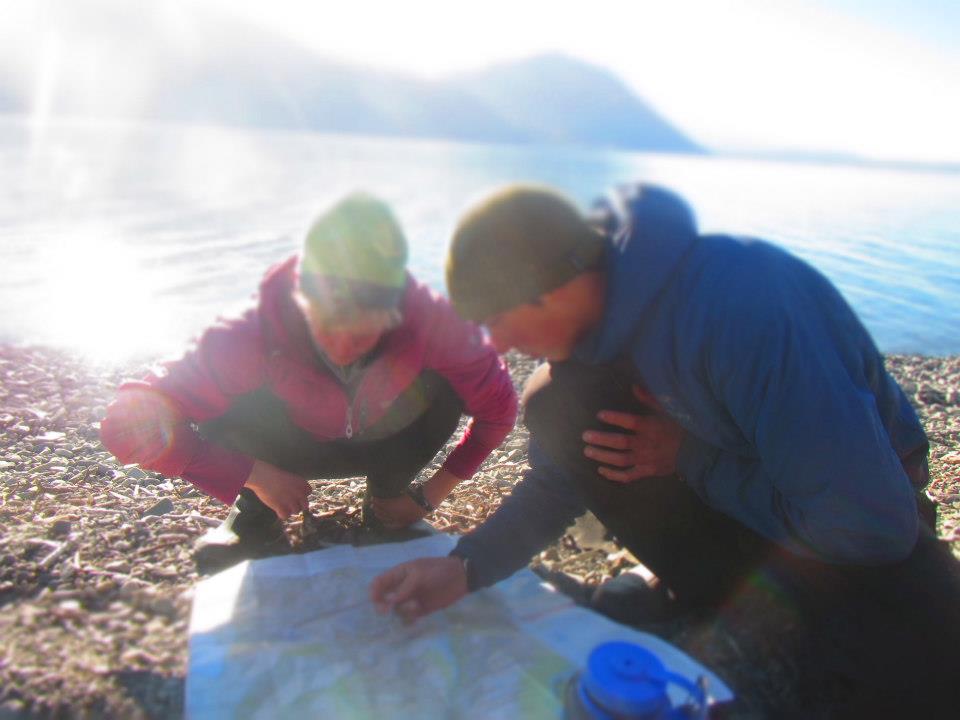
We sent scouts in both directions and determined that our original route was a viable option. After much discussion and assessment of both the map and what was in front of us, we decided to go for it. Colt, a 6’2” lanky machine, kicked us safe steps up the snow to the ridge, and one by one we topped out, the pride of having gotten there ourselves buoying us up the final pitch. On the wide, flat summit of our 10th nameless peak, we basked in the sun and ate a pancake breakfast and revelled in our own agency in the whole thing.
NOLS semesters are carefully, strategically designed on what I think of as a “gradual release model” (or scaffolding). The first month-long section of our trip found us sea kayaking in New Zealand’s Marlborough Sound, learning how to live outside and getting to know each other. Our kayaking instructors Ben and Sally were part of our group—so involved in the process that they felt like essential members of the team. They started off telling us where we were going and how we needed to get there, marking Xes on our charts and correcting us when we erred.
The mountaineering section gave us a little more autonomy, allowing leaders of the day to make on-the-fly decisions and weigh in on objectives. By the time we reached the final section of the semester, backpacking, we were nearly self-sufficient. Our instructors Pete and Andy drank several rounds of coffee most mornings and let us plan and execute our days in autonomous groups of five, ambling behind us and meeting up with us later that evening at camp. By the time ISGE rolled around, they were somewhere in the general vicinity with a satellite phone just in case, but other than that, we were on our own.
The gradual release was executed flawlessly. By the time we had independence, we were ready for it. It didn’t mean we didn’t make mistakes or ask for help, but we were eager to test ourselves by the time we were given the room to do so.
We spent the entire fall learning how to live outside, how to cook on camp stoves, how to route find, how to make group decisions, how to communicate, how to place our feet, how to care for each other. We had learned how to fuel our bodies and dig superior cat holes and triangulate our location and string up a tarp just about anywhere. We had learned how to tie knots and look at a blank mountain and find the best way up it. We had learned everything we needed to know.
The final day of our ISGE, and the final day of our course, we practically skipped down a rocky, forested track, singing and taking group photos that could barely contain our joy. We had already and would continue to experience a bittersweetness that came with this ending, so powerful it would never really go away. For now, though, we were simply in full physical celebration of all that we had accomplished.
Our expedition had gone off without a hitch. It had been a confirmation of all the things we’d learned, all the challenges we’d overcome, all the ways we’d grown. It felt fitting that we would ride this feeling to the Quailburn trailhead, to the end of the line, to the suitable tie-off of three months in the wild.
But we should have known that no knot could hold all that a NOLS semester contains, that even though ISGE felt like the final test, the culminating capstone project, that it would not be. That we would carry all we had learned with us until we reached the next hill to climb, the next X to plot a route to.
This would happen to me over and over, as I became a summer trip leader for teenagers and planned long backpacking trips with friends. I would be in positions to collaborate with others who held their own backcountry knowledge, and I would be given the opportunity to guide professionally those who were just beginning their journeys.
Nearly six years after my semester in New Zealand, I found myself at a trailhead in Aspen in March, preparing to ski many miles up to a 10th Mountain Division hut with two cars full of my coworkers who had never set foot in the winter backcountry. There were several more levels of gradual release, it appeared. In New Zealand, five of us with the same training and experience worked together to achieve our objectives. In the summer, I guided trips with a co-leader, in-country guides and entire office staff of support behind me. On this day, standing in the dirt parking lot with our skis attached to our packs, I found six sets of eyes looking at me, waiting for directions.
I realized that I was now on the other side of the equation. I had started as a NOLS student, looking to Ben and Sally for what to do, unequipped to proceed on my own. Gradually, I’d been able to weigh in, collaborate, and finally, hold my own as a leader among peers. But I was now preparing to lead an inexperienced group in a real-life setting.
The approach to the hut was miles longer than advertised, forcing us to continue past our limits. No one was familiar with their gear, so as a group we moved slowly. People were tired, hungry, frustrated, sore—all the things you feel when you push yourself physically in the outdoors. And yet, the sun burst through the trees in dusty tendrils of light, the snow gleamed softly underfoot, the far-off mountain peaks stood tall against the sky, and through the struggle we experienced the power of the wilderness.
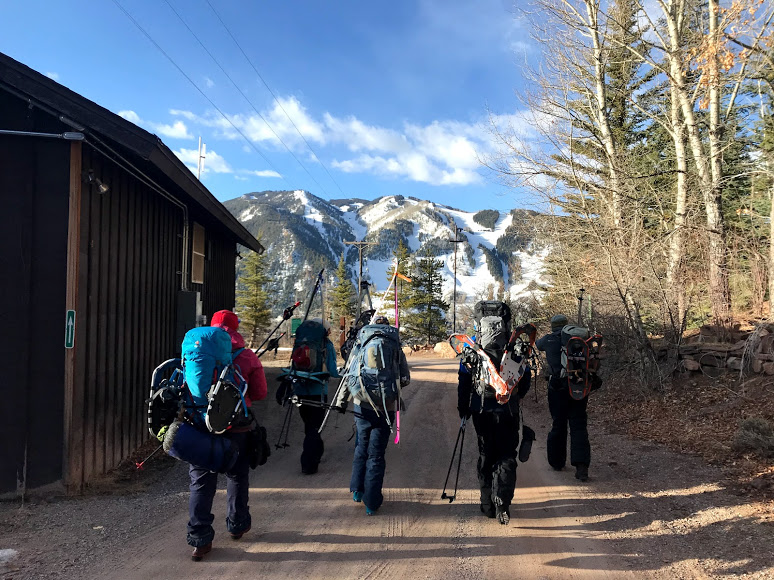
Throughout the weekend I handled navigation and avalanche safety, fielded questions on gear and technique, and explained the ins and outs of hut chores. The role felt comfortable and natural. I had all the tools I needed to succeed, and I felt the inevitable warmth of sharing the outdoors with others. ISGE had not been the culmination, had not been the end.
When I left the Kiwi backcountry, it could have stopped there. I could have written it off as a once-in-a-lifetime experience. I could have left it on the South Island or kept it to myself.
Blame the teacher in me, but it felt impossible to let the knowledge and the experience stop there. The logical next phase would be to pass it on to others, as it had been passed on to me. And the entire weekend of the hut trip, I felt an unrelenting gladness—to have learned how to be out here in the first place, to have been able to pursue it consistently on my own, and finally, to be sharing it with others. It felt like the most sublime privilege. The verdant cliffs of New Zealand and the snowy woods of Colorado seemed to hold hands across time and space, linked by the transference of what had happened there to what was happening here.
As we hiked out the last dirt-covered mile back to the parking lot, skis strapped to our packs, I stopped to adjust something and fell behind the group. I took easy, automatic steps over rocks and across dirt in my ski boots, feeling the weight of my pack. It was the most familiar, organic feeling in the world, moving forward on my feet in this way, carrying what I needed, revelling in the quiet. A butterfly fluttered right by my arm and out onto the trail, and I just watched it, totally absorbed in the simple details of the moment. I recalled the simplicity of our days in New Zealand, spent getting from one place to another.
I was far away from the place in which the knowledge had been passed to me, but I was able to carry it within myself and pass it on to others.
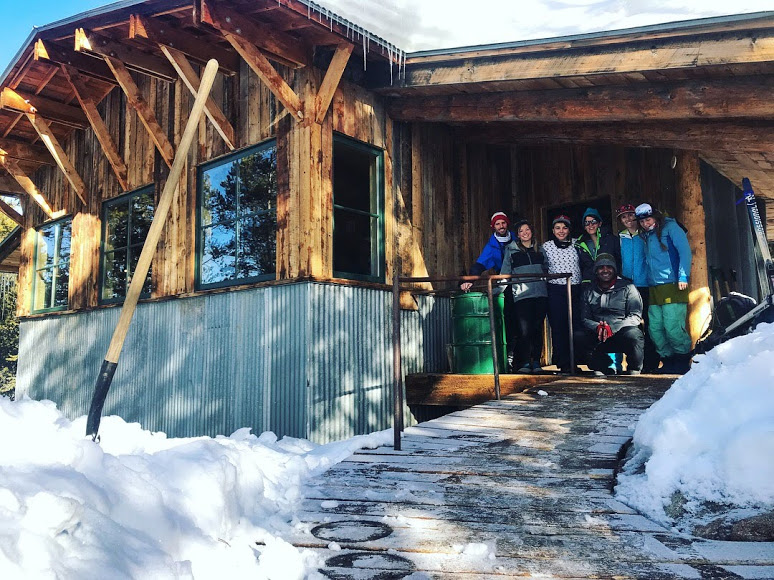
- Leadership Skills
- Semester
- Skiing
- Skills
- Nols New Zealand
- Nols Semester
- Outdoor Semester
- Stories
- Student Stories
- Alumni Accomplishments
- Leadership
Written By
Carolyn Highland
Carolyn Highland is a teacher and writer living in Truckee, California. When not taking her fourth grade students at Tahoe Expedition Academy (www.tahoeexpeditionacademy.org/) into the field, she can be found skiing, trail running, climbing, mountain biking, backpacking, jumping into alpine lakes, and then writing about it. Carolyn is a graduate of the 2012 NOLS Semester in New Zealand and the 2019 Rocky Mountain Outdoor Educator Course. You can follow her on Instagram at @c_highland


